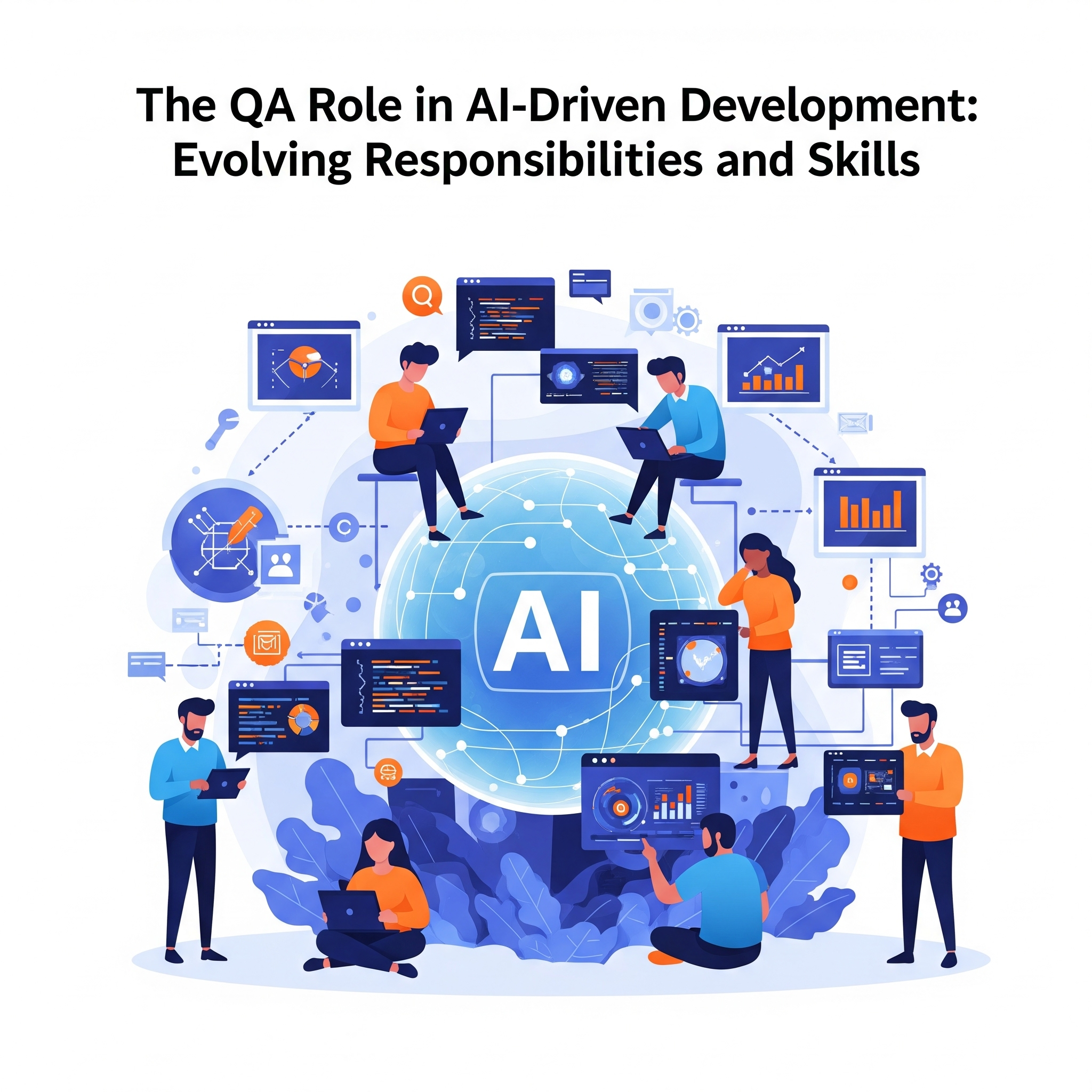Securing Software in 2025: Lessons from Microsoft’s June Patch Tuesday

Key Takeaways
- Microsoft's June 2025 Patch Tuesday, addressing 66 vulnerabilities including a zero-day, highlights the ongoing cybersecurity urgency.
- Prioritizing zero-day vulnerability mitigation through scanning, patch validation, and threat intelligence is crucial for QA teams.
- Shift-left security testing, integrating SAST/DAST early in the SDLC, is a standard practice for proactive vulnerability detection.
- AI-driven security testing tools (e.g., KaneAI, Test.ai) are becoming indispensable for enhancing test efficiency and coverage.
- Strengthening API security testing using OWASP guidelines and automation is vital as APIs remain prime attack targets.
- Addressing risks from legacy systems by identifying dependencies and planning retirement is essential for overall software security.
In an era where cyber threats evolve faster than ever, securing software is a top priority for organizations worldwide. Microsoft’s June 2025 Patch Tuesday, addressing 66 vulnerabilities including a critical zero-day exploit, serves as a stark reminder of the relentless pace of cybersecurity challenges. For QA engineers, testers, developers, and tech professionals, understanding the implications of these updates is crucial for building resilient, secure software. This blog post dives into the lessons from Microsoft’s June 2025 Patch Tuesday, exploring key trends, tools, and strategies to enhance software security in 2025. Whether you’re a QA professional or a developer, these insights will empower you to strengthen your quality assurance processes and stay ahead in the dynamic world of software testing.
The Growing Importance of Software Security in 2025
Cybersecurity is no longer an afterthought—it’s a core component of software development. With the global cost of cybercrime projected to reach $10.5 trillion annually by 2025, organizations cannot afford to overlook vulnerabilities. Microsoft’s June 2025 Patch Tuesday highlighted this urgency, addressing 66 flaws, including a critical zero-day vulnerability (CVE-2025-33053) in Web Distributed Authoring and Versioning (WEBDAV). This patch cycle underscores the need for proactive security testing, continuous monitoring, and collaboration across development and QA teams to deliver secure software.
For QA professionals, the stakes are higher than ever. Software testing now extends beyond functionality to encompass security, performance, and compliance. By integrating security-focused testing into the software development lifecycle (SDLC), QA teams can catch vulnerabilities early, reduce costs, and enhance user trust. Let’s explore the key lessons from Microsoft’s June Patch Tuesday and how they shape the future of software security.
Key Lessons from Microsoft’s June 2025 Patch Tuesday
1. Prioritize Zero-Day Vulnerability Mitigation
Microsoft’s June 2025 update addressed a zero-day exploit actively used in the wild, emphasizing the critical need for rapid response to emerging threats. Zero-day vulnerabilities, which are exploited before patches are available, pose significant risks because attackers can target systems without warning. For QA teams, this highlights the importance of:
- Vulnerability Scanning: Use tools like Nessus or Qualys to identify potential weaknesses in software before deployment.
- Patch Validation: Test patches in sandboxed environments to ensure they don’t disrupt functionality. Microsoft’s updates, for instance, targeted Windows 11 (KB5060842, KB5060999), requiring thorough regression testing to validate system stability.
- Threat Intelligence: Stay informed about emerging threats through platforms like MITRE ATT&CK or Microsoft Defender’s threat detection updates, which added over 200 new detections in 2025.
Real-World Example: The zero-day flaw in WEBDAV (CVE-2025-33053) allowed attackers to exploit remote code execution (RCE). QA teams can learn from this by prioritizing RCE testing in APIs and web services, using tools like OWASP ZAP to simulate attacks.
2. Shift-Left Security Testing
Microsoft’s Secure Future Initiative (SFI) emphasizes “secure by design” principles, advocating for security integration early in the SDLC. This aligns with the shift-left testing trend, where QA teams embed security checks during development rather than post-deployment. By 2025, shift-left testing is a standard practice, enabling early detection of vulnerabilities like elevation of privilege (25% of June patches) and information disclosure (19%).
How QA Teams Can Implement Shift-Left:
- Static Application Security Testing (SAST): Tools like SonarQube analyze code for vulnerabilities during development, reducing the risk of flaws reaching production.
- Dynamic Application Security Testing (DAST): Use Burp Suite to simulate real-world attacks on running applications, identifying runtime vulnerabilities.
- Collaboration with Developers: Pair QA engineers with developers for exploratory testing sessions, fostering a culture of shared responsibility for security.
Analogy: Think of shift-left testing as vaccinating software against threats during its “infancy” (development) rather than treating infections after deployment.
3. Embrace AI-Driven Security Testing
AI is transforming software testing, and Microsoft’s June 2025 updates highlight its growing role in vulnerability detection. AI-powered tools can predict potential defects, generate test cases, and optimize coverage, making them indispensable for QA teams. According to a 2024 survey, 46% of QA teams have integrated AI into their workflows, with tools like KaneAI enabling natural language-based test creation.
AI Tools for QA Professionals:
- KaneAI by LambdaTest: Creates and refines test cases using natural language, reducing the technical barrier for testers.
- Test.ai: Analyzes application behavior to generate adaptive test scripts, ideal for complex systems.
- Self-Healing Tests: AI tools like those from Parasoft automatically adjust test scripts when code changes, minimizing maintenance efforts.
Practical Takeaway: QA engineers should upskill in AI-driven tools to enhance test efficiency. Start with free courses on platforms like Codecademy to learn Python for AI testing frameworks.
4. Strengthen API Security Testing
APIs are prime targets for cyberattacks, as seen in Microsoft’s patches for vulnerabilities in Windows SMB Client and WEBDAV. With APIs powering modern applications, QA teams must prioritize API security testing to prevent unauthorized access and data leaks.
Best Practices for API Security:
- Use OWASP API Security Top 10: Follow guidelines to test for common risks like broken authentication or improper data exposure.
- Automate API Testing: Tools like Postman and SoapUI allow QA teams to automate functional and security tests for APIs.
- Simulate Real-World Attacks: Use tools like OWASP ZAP to perform penetration testing, identifying vulnerabilities in API endpoints.
Stat: APIs were involved in 17% of cyberattacks in 2024, underscoring the need for robust testing frameworks.
5. Address Legacy System Risks
Microsoft’s June 2025 patches included fixes for legacy components like MSHTML, a remnant of Internet Explorer, highlighting the dangers of outdated technology. Legacy systems often lack modern security features, making them vulnerable to exploitation.
Strategies for QA Teams:
- Identify Legacy Dependencies: Use tools like Dependency-Check to map outdated libraries and components in your software stack.
- Prioritize Retirement: Advocate for replacing legacy systems with modern alternatives, such as migrating from MSHTML to Chromium-based frameworks.
- Test Compatibility: Ensure patches for legacy systems don’t disrupt existing workflows by conducting thorough compatibility testing.
Real-World Example: The exploitation of MSHTML in 2024 to mask malicious files shows how legacy components can compromise security. QA teams should simulate similar attack vectors to identify weak points.
Comparing Traditional vs. Modern Security Testing Approaches
| Aspect | Traditional Testing | Modern Testing (2025) |
|---|---|---|
| Timing | Post-development, reactive | Shift-left, integrated throughout SDLC |
| Tools | Manual tools, basic scripts | AI-driven tools (KaneAI, Test.ai), SAST/DAST |
| Focus | Functional validation | Security, performance, and compliance |
| Collaboration | Siloed QA teams | Cross-functional with developers and ops |
| Speed | Slow, manual processes | Automated, continuous testing in CI/CD pipelines |
Analysis: Traditional testing is ill-equipped for 2025’s complex threat landscape. Modern approaches, driven by AI and automation, enable faster, more comprehensive testing, aligning with Microsoft’s “secure by design” philosophy.
Practical Insights for QA Professionals
- Upskill in Security Testing: Learn tools like OWASP ZAP, Burp Suite, and SonarQube to address vulnerabilities like those patched in June 2025. Certifications like ISTQB Security Tester can boost your expertise.
- Integrate Security into CI/CD: Embed automated security checks into CI/CD pipelines using tools like Jenkins or GitLab. This ensures continuous testing aligns with rapid release cycles.
- Leverage Cloud-Based Testing: Platforms like Sauce Labs and BrowserStack enable scalable testing across diverse environments, critical for validating Microsoft’s cloud-focused patches (e.g., Azure AD).
- Collaborate Across Teams: Work closely with developers and security teams to prioritize high-risk vulnerabilities, such as RCE or elevation of privilege, as seen in Microsoft’s updates.
- Monitor Threat Intelligence: Subscribe to feeds like Microsoft Security Response Center (MSRC) to stay updated on vulnerabilities and patches, enabling proactive testing.
Challenges and Solutions in Security Testing
Challenge: Lack of skilled QA professionals in security testing.
Solution: Invest in training programs and certifications to build expertise in AI, automation, and cybersecurity.
Challenge: Resistance to adopting modern tools due to legacy systems.
Solution: Gradually transition to cloud-native architectures and advocate for tool modernization, using case studies like Microsoft’s SFI.
Challenge: Balancing speed and security in rapid release cycles.
Solution: Adopt hyper-automation and AI-driven testing to maintain quality without slowing development.
Conclusion
Microsoft’s June 2025 Patch Tuesday is a wake-up call for QA teams to prioritize security in software development. By embracing shift-left testing, AI-driven tools, and robust API security practices, QA professionals can mitigate risks and deliver resilient software. The evolving threat landscape demands continuous learning, collaboration, and adaptation to stay ahead.
Ready to strengthen your QA strategy? Start by exploring tools like OWASP ZAP or KaneAI, upskilling in security testing, and integrating continuous testing into your CI/CD pipelines. Share your thoughts in the comments below, or contact our team at QA Blogs to learn how we can help you navigate the future of software security. Let’s build secure software together in 2025!
Join Our Community of QA Professionals
Get exclusive access to in-depth articles, testing strategies, and industry insights. Stay ahead of the curve with our expert-curated content delivered straight to your inbox.

Nikunj Mistri
Founder, QA Blogs



